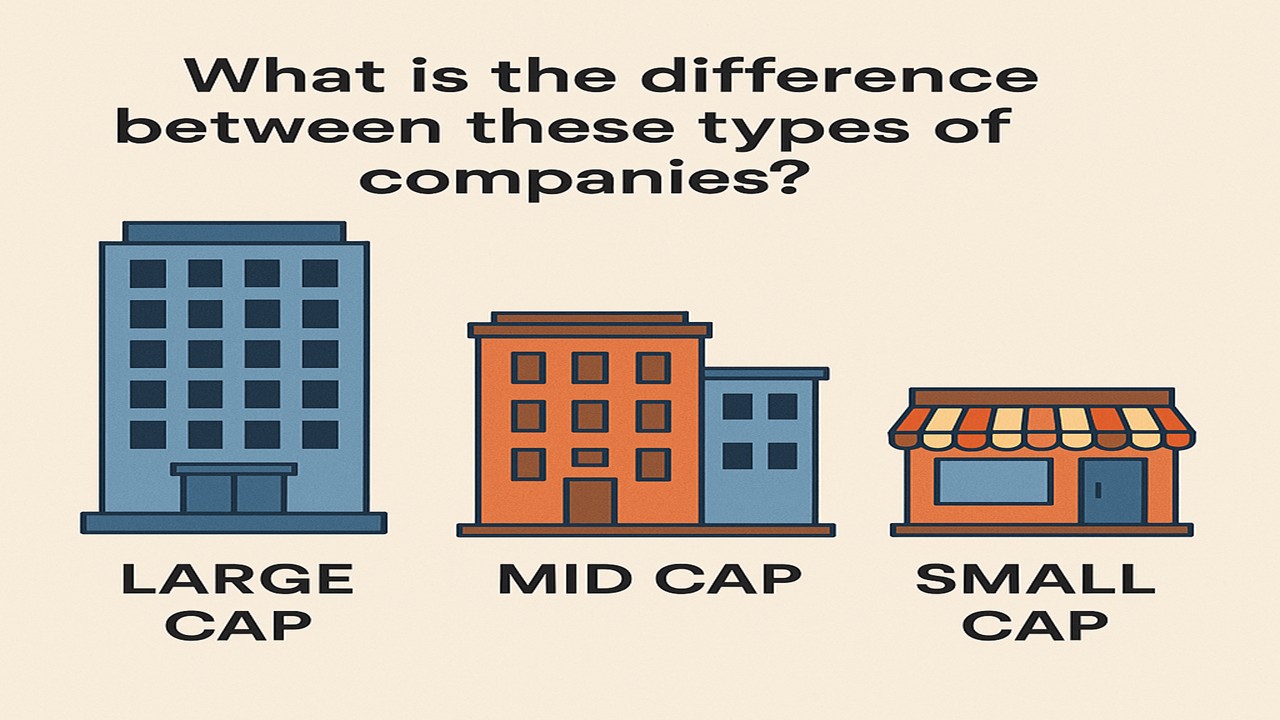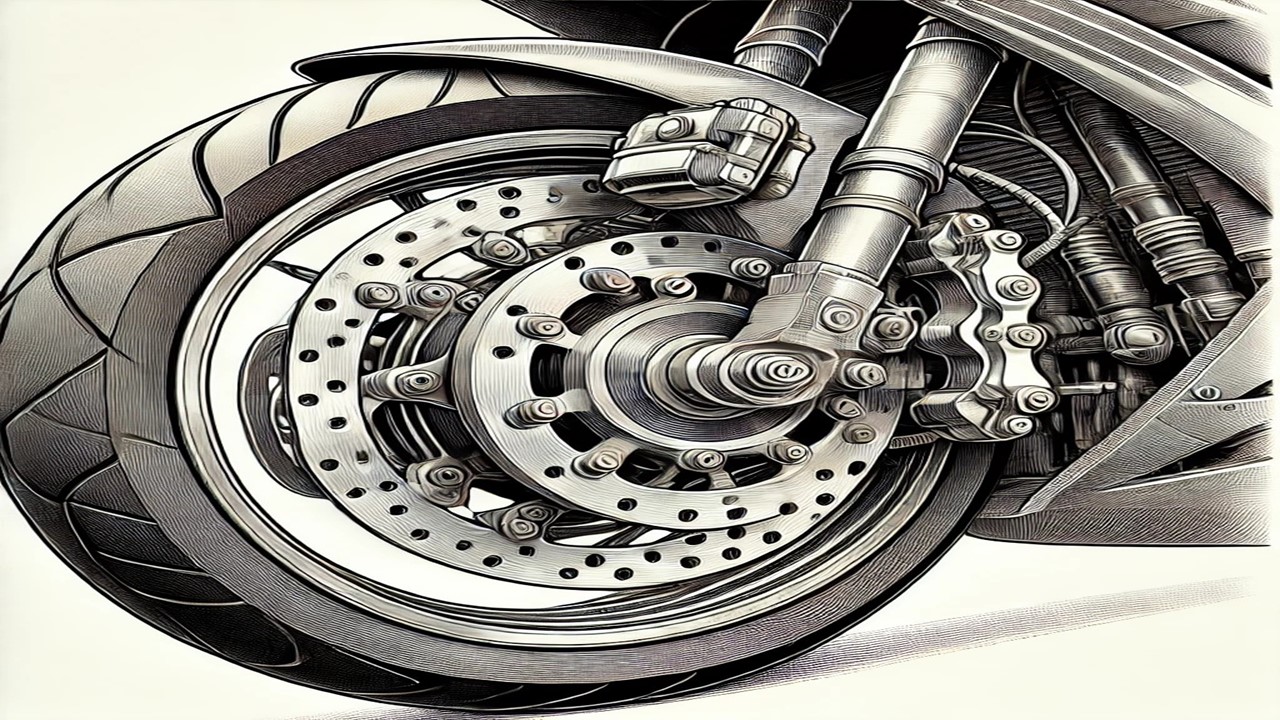
हिंदी में पढ़ने के लिए मेनू बार से हिंदी भाषा चयन करें।
If you are planning to invest in the stock market, you must have heard the terms Large Cap, Mid Cap, and Small Cap. These terms may sound technical, but understanding them is essential for every investor.
In this detailed article, we will explain what these categories mean, how they are classified, and what type of companies fall under each. We’ll also help you understand the risks and benefits of investing in them—so you can make an informed decision.
What is Market Capitalization?
Before we dive into the three categories, it’s important to understand the concept of Market Capitalization.
Market Capitalization = Share Price × Total Number of Outstanding Shares
It indicates the total market value of a company.
For example, if a company’s share price is ₹100 and it has 10 crore (100 million) shares:
Market Cap = ₹100 × 10,00,00,000 = ₹10,000 crores
Based on market capitalization, companies are classified into Large Cap, Mid Cap, and Small Cap.
1. Large Cap Companies
Large Cap companies are well-established, financially strong, and have the highest market capitalization. According to SEBI (Securities and Exchange Board of India), the top 100 companies in terms of market cap are considered Large Cap.
Examples:
- Reliance Industries
- TCS (Tata Consultancy Services)
- Infosys
- HDFC Bank
- ITC
✅ Key Characteristics:
- They are stable and trustworthy.
- Have a long operational history.
- Less volatile during market fluctuations.
- Often pay regular dividends.
- Strong fundamentals and corporate governance.
Suitable for:
- Investors looking for low-risk, stable returns.
- Those who want to build long-term wealth gradually.
2. Mid Cap Companies
Mid Cap companies fall between Large Cap and Small Cap. They are in the growth phase and have the potential to become large caps in the future. SEBI defines rank 101 to 250 companies by market cap as Mid Cap.
Examples:
- Tata Elxsi
- Page Industries
- Polycab
- Adani Wilmar
- IDFC First Bank
✅ Key Characteristics:
- Offer higher growth potential than large caps.
- Moderate risk and moderate returns.
- Often more innovative and fast-growing.
- React more sharply to market changes than large caps.
Suitable for:
- Investors who are willing to take some risk for higher returns.
- Those with a medium- to long-term investment horizon.
3. Small Cap Companies
Small Cap companies are the smallest in terms of market cap and are often newly established or still expanding. According to SEBI, all companies ranked 251 and below in terms of market capitalization are Small Cap.
Examples:
- Suzlon Energy
- Brightcom Group
- JBM Auto
- Trident Ltd
- Digispice Technologies
✅ Key Characteristics:
- Highly volatile and high-risk investments.
- Can deliver very high returns in the long term.
- Lower liquidity – buying/selling may not be easy.
- Performance can be extremely unpredictable.
Suitable for:
- Aggressive investors who can take high risks.
- Those who can research companies in depth.
- Long-term investors who don’t mind market volatility.
Comparative Chart – Large Cap vs Mid Cap vs Small Cap
| Feature | Large Cap | Mid Cap | Small Cap |
| Company Size | Very Large | Medium | Small |
| Risk | Low | Moderate | High |
| Return Potential | Stable | Higher | Very High / Very Low |
| Market Movement | Low Impact | Medium Impact | High Impact |
| Stability | Very Stable | Moderately Stable | Unstable |
| Suitable For | Conservative | Balanced | Aggressive Investors |
| Investment Horizon | Long-Term | Medium to Long-Term | Long-Term Only |
Important Tips Before Investing
1. Know Your Objective
If your goal is capital safety and stable income, Large Cap is a better choice. If you’re aiming for growth, consider Mid or Small Cap.
2. Understand Your Risk Tolerance
Every investor has a different risk appetite. If you are risk-averse, stick to large caps. If you can handle ups and downs, explore mid and small caps too.
3. Diversify Your Portfolio
Don’t invest all your money in one category. A well-balanced mix of all three can reduce risk and improve overall returns.
4. Do Your Research
Blind investing is dangerous. Always check a company’s fundamentals, past performance, management, and future growth potential.
5. Keep a Long-Term Perspective
Especially in Small and Mid Cap investments, time is a critical factor. Short-term volatility may hurt, but long-term trends often reward patient investors.
Each category—Large Cap, Mid Cap, and Small Cap—has its own benefits and challenges. The key to successful investing is understanding your financial goals, risk-taking ability, and investment horizon.
Here’s a summary:
- Large Cap – Best for stable and safe investing.
- Mid Cap – Balanced approach with moderate growth.
- Small Cap – High-risk, high-reward for aggressive investors.
No one-size-fits-all solution exists. The right mix of all three can help you grow your wealth while managing risk smartly.
Smart investors don’t just chase returns—they manage risk wisely and invest with a plan.




































































